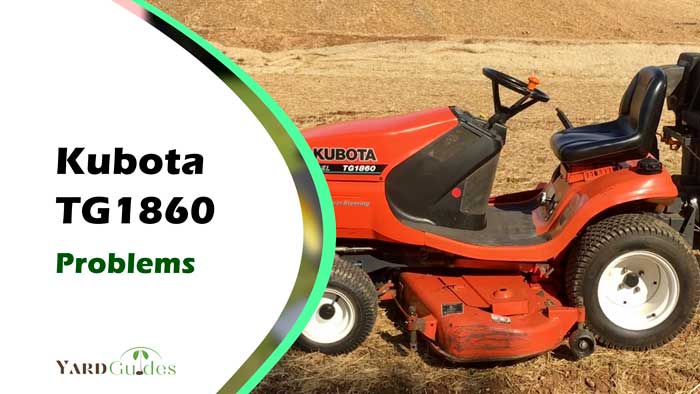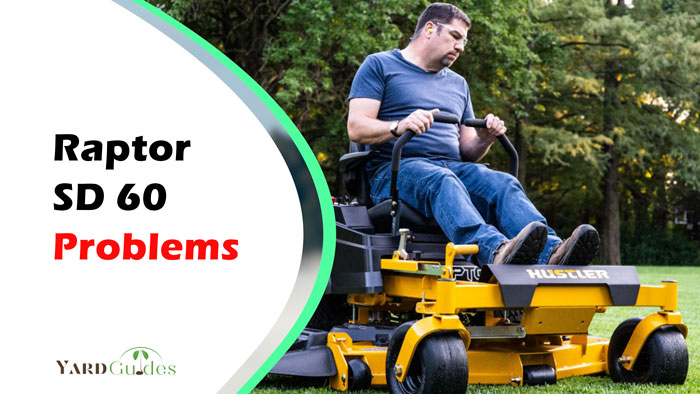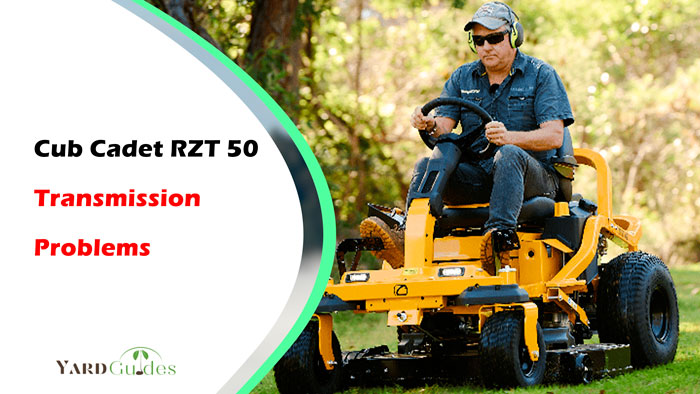If you are a Kubota TG1860 owner, you know how reliable and powerful this lawn tractor can be. But this edition can experience common problems that can prevent it from working at its optimal level.
So, what are the most common Kubota TG1860 problems to expect? You may encounter problems with the hydrostatic transmission, such as strange noises and difficulties shifting gears. Engine overheating and steering failure were also reported by users. Besides, this diesel engine may encounter starting issues, especially in cold weather.
We will identify the 4 most common problems associated with the TG1860 and provide possible solutions to keep your lawn tractor running in peak condition. So, let’s dive in and get started!
Problems & Solutions Chart of Kubota TG1860
The table below portrays the common issues associated with Kubota TG1860 and solutions.
| No | Problem | Solution |
| 1 | Engine starting problems | Clean/replace faulty components (air filter and fuel filter |
| Replace the battery or ensure proper connection | ||
| Open your fuel shutoff valve | ||
| Ensure the shift lever and throttle lever are in the right position | ||
| Use winter diesel blends/correct biodiesel percentage or starting aid (for starting issues in cold weather) | ||
| 2 | Steering and alignment problems | Inflate the tires to specs |
| Lubricate the steering linkage | ||
| Top off the power steering fluid and hydraulic oil | ||
| Tighten/replace worn steering components, such as tie rods | ||
| 3 | Hydrostatic transmission failure | Inspect and top off the transmission fluid (3.7 quarts) |
| Replace damaged seals | ||
| Inspect and replace damaged gears | ||
| 4 | Engine overheating | Check and top off the coolant level in the radiator (3.5 quarts) |
| Check and fix any leaks in the cooling system | ||
| Clean the radiator core and screen thoroughly | ||
| Purge any air pockets in the cooling line by following the manufacturer’s instructions | ||
| Reduce the workload on your mower or shift to low gear | ||
| Tighten or replace the fan belt |
In-Depth Analysis of Kubota TG1860 Problems and Solutions
Let’s discuss the issues in detail.
1. Engine Starting Problems
Regarding engine starting issues, there can be two distinct problems. The engine is not starting in general, and the engine is not starting in cold weather.
Generally Won’t Start
The TG1860 mower will sometimes fail to start for no apparent reason. Other times, it just clicks and cranks without starting.
It could be due to incorrect positioning of the transmission gear shift lever, or a plugged fuel filter/air filter. Also, it could be electrical problems, such as loose/corroded battery connections or a blown fuse.
In addition, fuel and oil-related issues, such as closed shutoff valves, stale/improper fuel levels, and incorrect engine oil viscosity, are to blame.
Solutions
- Clean/replace the fuel filter, air filter, and the 10 amp fuse (if blown)
- Ensure the fuel valve is open and that the fuel is fresh and topped off
- Use the correct engine oil as stipulated in the manual
- Replace the battery or tighten connections if the mower clicks but won’t start
- Ensure the gear shift lever is in the neutral position, moving the throttle lever forward
Starting Malfunctions in Cold Weather:
It often happens during winter when the temperature drops below 15 degrees F (-9.5 degrees C).
Diesel gelling is the primary cause because diesel fuel contains paraffin wax that improves viscosity. As the temperature drops, paraffin wax crystallizes, causing the diesel fuel to gel/thicken. For this reason, it cannot flow freely through the fuel system, making it hard for the engine to fire.
Also, incorrect biodiesel percentage can cause starting failure in cold weather. Biodiesel has a higher cloud point (the temperature at which crystals begin to form in the fuel).
As the percentage of biodiesel in the blend increases, the cloud point also increases. If the fuel’s cloud point is too high, the fuel becomes too thick to flow properly at low temperatures, leading to starting problems.
Likewise, a malfunctioning cooling system (low coolant level and quality) is to blame.
Solutions
- Use winter diesel blends. It contains additives that improve the fuel’s flow properties and prevents the formation of wax crystals that can clog fuel filters and reduce engine performance. You may want to use No. 1 diesel in temperatures below -10 degrees C (14 degrees F).
- Follow recommendations regarding the correct biodiesel percentage. Generally, biodiesel concentration should be a maximum of 5% of the fuel blend for B05 biodiesel and 6% to 20% for B20 biodiesel.
- Maintain a proper cooling system by checking coolant level and quality.
- You can also facilitate a successful engine start by employing engine starting aids. The most common ones include block heaters, glow plugs, and intake preheaters.
If everything fails, you may have a problem with your cold start injector or switch. Clean or replace them if necessary.
2. Steering and Alignment Issues
Some report difficulties turning the steering wheel, jerky wheel movements, strange noises when turning wheels, and the mower pulling to one side.
There are several potential causes for steering issues on a Kubota TG1860, including:
- The power steering system in the Kubota TG1860 is hydraulically assisted. And low power steering fluid can cause the steering to feel loose or not responsive
- Improperly lubricated steering linkage
- Uneven tire pressure can cause the mower to pull to one side
- Loose steering components or misplaced alignments
Solutions
- Check the power steering fluid level and add more if it’s low. Also, check for leaks in the power steering system and fix any leaks if you find them.
- Lubricate the steering linkage and ensure all moving parts are adequately lubricated. It may need to be replaced if there’s damage or excessive wear.
- Check the tire pressure on all four tires and inflate evenly to the correct pressure as stipulated in the manual.
Also, you may want to reset the power steering. Here’s a video of how to go about it:
3. Hydrostatic Transmission Problems
The hydrostatic transmission (HST) in the TG1860 mower uses fluid instead of belts to transfer power from the mower engine to the wheels. Though efficient, it may experience problems over time.
The problem often occurs at high RPMs, where the transmission loses power. Also, slow response or delayed engagement is a common problem. Possible causes of slow response include low fluid levels, damaged seals, or a malfunctioning control valve.
In addition, unusual noises such as whining, grinding or banging when shifting gears are a common problem in a malfunctioning HST. It can be due to damaged gears, low fluid levels, or improper lubrication.
Solutions
- Ensure regular inspect the transmission fluid levels and gears and carry out appropriate transmission system maintenance.
- Ensure that the seals are in perfect condition with no visible signs of wear, tear, or leaking. If any of them show such signs, replacement is necessary.
4. Engine Overheating
There are five possible causes of engine overheating in a Kubota TG1860 mower.
- If you use the mower to pull heavy loads or perform tasks that are too strenuous for its engine, it can cause the engine to overheat.
- Low coolant level
- If the coolant system is blocked or has air pockets, it can cause the engine to overheat.
- Clogged radiator
- Damaged/loose fan belt
Solutions
- Check the coolant level in the radiator. If it’s low, fill it up to the appropriate level with the recommended coolant. Also, check for any leaks in the system that could be causing the coolant level to drop.
- Clean the radiator thoroughly and ensure it is functioning properly.
- Reduce the load or workload on your mower or shift to low gear.
- Check the fan belt for damage and tighten or replace it as needed.
Conclusion
Owners of Kubota TG1860 mowers – both new and secondhand – might experience various issues. Most common problems to expect include starting issues, steering problems, issues with the hydrostatic transmission, and engine overheating.
Most issues stem from a lack of maintenance rather than from parts or malfunctions of the machine. Perform routine checkups and service procedures according to the Kubota service manual. If the above steps prove ineffective, seek professional assistance from a mechanic.



